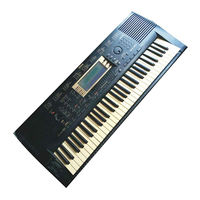Yamaha PortaTone PSR-730 Keyboard Manuals
Manuals and User Guides for Yamaha PortaTone PSR-730 Keyboard. We have 1 Yamaha PortaTone PSR-730 Keyboard manual available for free PDF download: Owner's Manual
Yamaha PortaTone PSR-730 Owner's Manual (178 pages)
Yamaha Portatone Owner's Manual
Brand: Yamaha
|
Category: Electronic Keyboard
|
Size: 8.03 MB
Table of Contents
Advertisement
